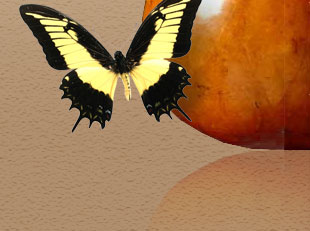Ewauso Oonkidongi Cultural Centre
Ewuaso oonkidongi cultural centre is situated in the heart of the rift valley 9 kilometres from maai mahiu. Hills and two mountains (mt Suswa and Mt Longonot) surround its scenery which is rich in wildlife such as Thomson gazelle (Gazella thomsonii) ,Burchellís Zebra( Equus burchelli) Giraffe (giraffa camelopardas) among others in a peaceful co existence with the Maasai community. Guided by the vision of conserving the maasai culture and history, Ewuaso oonkidongi cultural village gives the visitor an all inclusive package about the maasai culture.
The maasai, properly called the ILMAASAE,are predominantly nomadic pastoralists who occupy the southern part of Kenya and northern districts of Tanzania. Maasai is essentially a linguistic term referring to the speakers of this Eastern Sudanic language (MAA) of the chari-nile branch of the Nilo-Saharan family.
The Maa language has two internal subdivisions (dialects): North Maa includes the speech varieties of the Isampur(Samburu) and the Iltiamus(Njemps).
South Maa includes the the speech varieties spoken by Illarusa, Ilmoitanik,
Isiria, ilwuasinkishu, ilpurko, Ilkeekonyokie, Ildamat, Iloitai,Iloodokilani
,Ildalalekutuk, ildamat, Ilkaputiei, ilmatapato and Ilkisonko.
The subdivisions function as politically independent iloshon.
The Maasai are further subdivided into clans whose members stem from the same
ancestor not far back in history. The clans are patrilineal and include the Ilmakesen(of
baboon) Ilaiserr (of the rhinocerous),Ilmolelian(of
elephants),Iltaar lo sero(of hyena) Ilukumae(of raven).
Regardless of clan or family affiliations, all Maasai are of to moieties, one
called Odo mongi(the house of the red oxen) and Orok kiteng (the
house of the black cattle)
Several thousand years ago the ancestors of the Maasai migrated eastwards from their supposed original homeland in northern central Africa, looking for pastures. In today’s Ethiopia they encountered Cushitic groups with whom they inter married, thereby adopting some cultural and linguistic elements including circumcision, division in age groups and the drinking of cow blood. Most likely before the 16th century, Maa speaking peoples entered into Northwestern Kenya. The growing number of Cattle is likely to have been the reason for this southward expansion, which led them to cross the Kerio Valley. Maasai elders see Kerio (Endikir-e-Kerio) as their origin. Prior to the arrival of the white man, the Maasai roamed the vast plains of east Africa grazing their large and treasured herds of cattle on the rich pasture abounding on the virgin grasslands.
Today, however, the descendants of these illustrious warriors of the pre-colonial era live in a greatly reduced land area occupying northern parts of Tanzania and southern Kenya.
The Maasai age-old rich traditions and customs and traditions little affected by the tumultuous and ever changing outside world. This is not to say that the Maasai have not responded to modern education. They have responded to it and the fruits have been an enrichment of their culture, in as much as a great deal is now preserved positively in written, visual and audio forms.
Come and join us in celebrating our culture in Ewuaso Oonkidongi cultural center.

